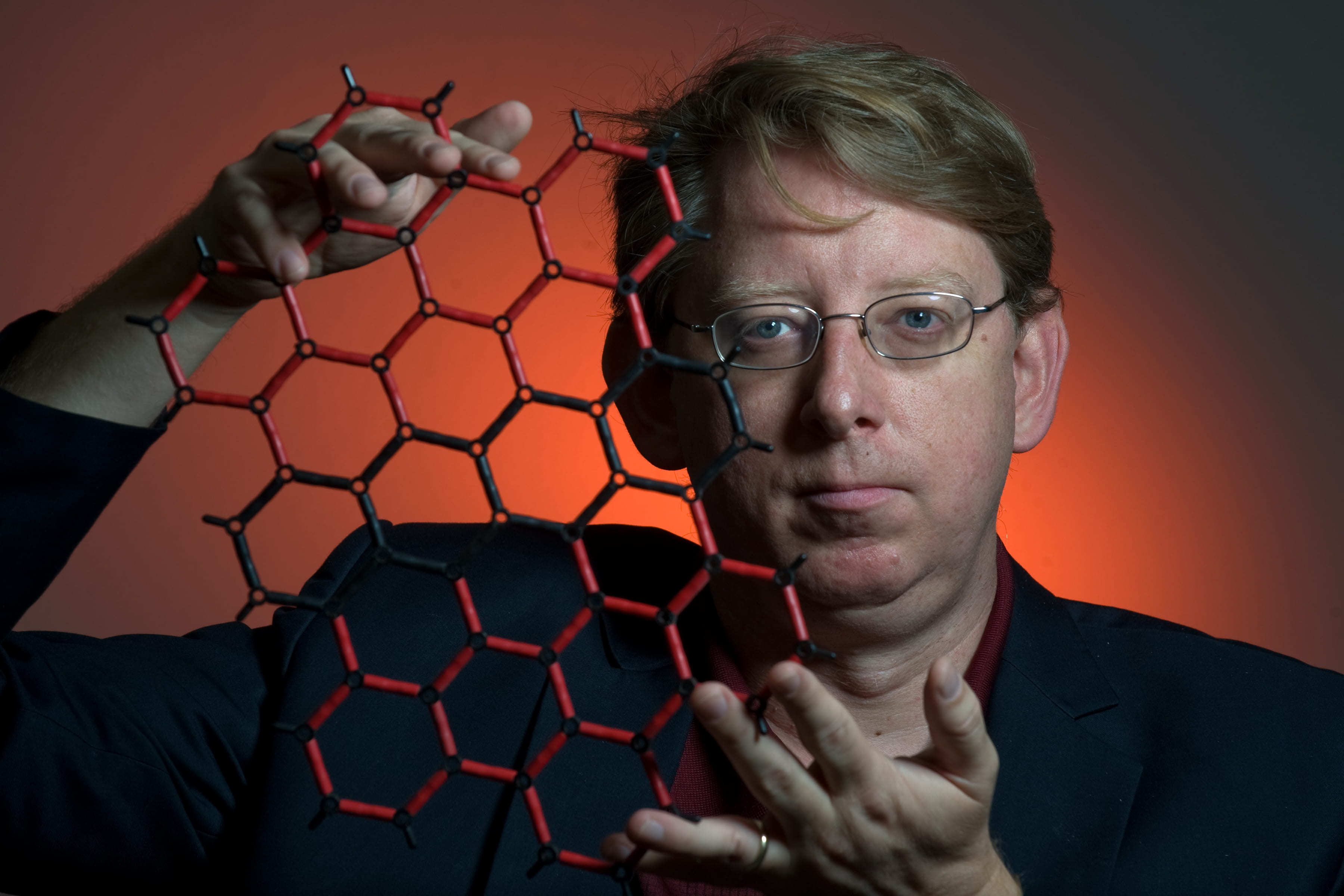UCI, other researchers shed light on process of programmed mitochondrial cell death
Use of graphene sensor also reveals 2 electrochemical gradients in energy production

Irvine, Calif., Nov. 2, 2016 – Employing a novel sensor made of graphene – a one-atom-thin layer of carbon – University of California, Irvine researchers have gained new insight into the process of programmed cell death in mitochondria, possibly opening the door to new ways of forcing cancer cells to self-destruct. They also hit a scientific jackpot of sorts by finding that an accepted paradigm of how cells create energy is only half-right.
For a study published in Nature’s Scientific Reports, Peter Burke, UCI professor of electrical engineering & computer science, biomedical engineering, and chemical engineering & materials science, and his team – along with collaborators at Harvard University and the University of Pennsylvania – created an electronic method of monitoring changes in the mitochondria that could indicate the start of the cell’s self-annihilation process.
Hundreds, even thousands of mitochondria, each with an inner and an outer membrane, exist within each of our cells. Known as the cells’ power plants, they metabolize energy from carbohydrates and fats to create energy that the cells can use and store it as voltage across their surfaces. But they also have a secondary role: regulating a cell’s life-death pathway.
Burke and his colleagues tethered about 10,000 purified mitochondria, separated from their cells, to a graphene sensor via antibodies capable of recognizing a protein in their outer membranes. The graphene’s qualities allowed it to function as a dual-mode sensor; its exceptional electrical sensitivity let researchers gauge fluctuations in the acidity levels surrounding the mitochondria, while its optical transparency enabled the use of fluorescent dyes for the staining and visualization of voltage across the inner mitochondrial membranes.
This ability to measure acidity levels and membrane voltages independently led to two important conclusions. The researchers showed for the first time that the inner and outer membranes of the mitochondria, which are responsible for different functions, are linked to each other’s processes; second, they identified two separate and independent electrochemical gradients where only one had been thought to exist.
One resides in the space between the inner and outer membranes, while the other is encased in folded pockets of the inner membrane. This discovery alters scientific understanding of the conversion of chemical nutrients into electrical energy that enables the cells in living organisms to function.
More importantly, perhaps, the researchers connected these two electrochemical gradients with the regulation of apoptosis, or programmed cell death, noting changes in mitochondrial function that can influence the life-or-death decision-making pathways. “It shows that there is a relationship between the energy and the apoptosis,” Burke said.
He added: “Understanding the mitochondrial pathway of apoptosis is important for manipulating various diseases, including cancer. We have created a novel system for assessing functional changes in mammalian mitochondria, but there are still open questions. The graphene sensor tells us [a lot], but we need to develop better tools to investigate how cells process these life/death decisions if we’re ever going to eradicate disease. We need to be able to see the inside of these nanoscale structures to really understand them.”
The study was funded by the National Institutes of Health and the Army Research Office’s Multidisciplinary University Research Initiative. Other authors on the paper are UCI Ph.D. students Ted D. Pham, Phi Q. Pham and Jinfeng Li; Douglas C. Wallace, a renowned geneticist and evolutionary biologist at the University of Pennsylvania; and Dr. Anthony G. Letai, a professor at Harvard University.
About the University of California, Irvine: Founded in 1965, UCI is the youngest member of the prestigious Association of American Universities. The campus has produced three Nobel laureates and is known for its academic achievement, premier research, innovation and anteater mascot. Led by Chancellor Howard Gillman, UCI has more than 30,000 students and offers 192 degree programs. It’s located in one of the world’s safest and most economically vibrant communities and is Orange County’s second-largest employer, contributing $5 billion annually to the local economy. For more on UCI, visit www.uci.edu.
Media access: Radio programs/stations may, for a fee, use an on-campus ISDN line to interview UCI faculty and experts, subject to availability and university approval. For more UCI news, visit wp.communications.uci.edu. Additional resources for journalists may be found at communications.uci.edu/for-journalists.